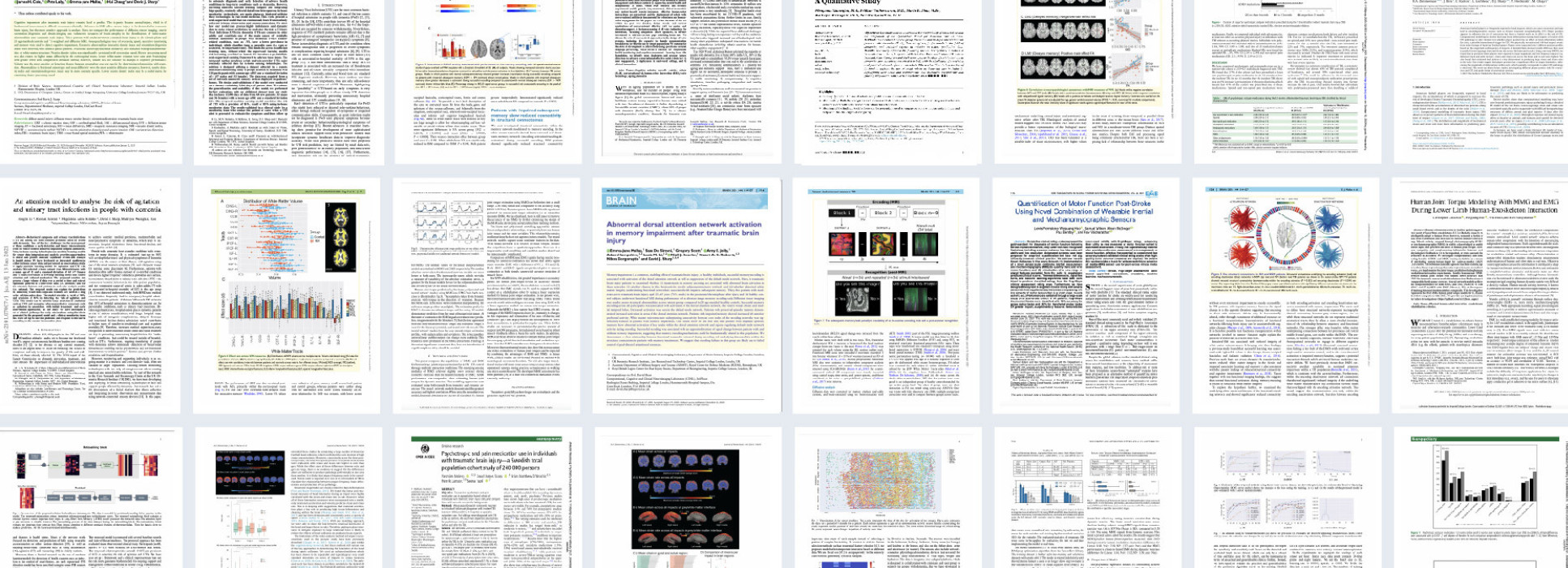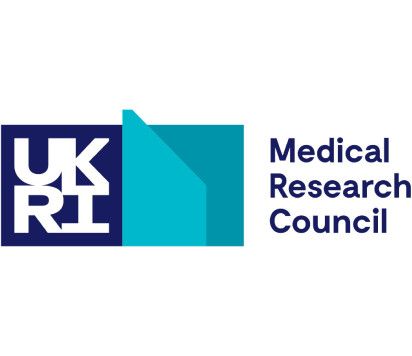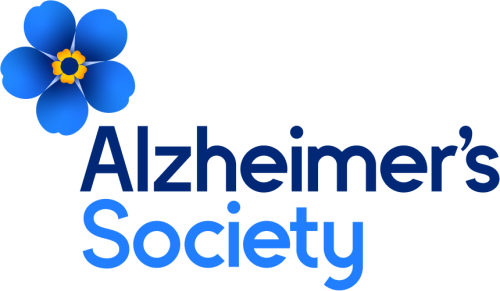
Results
- Showing results for:
- Reset all filters
Search results
-
Journal articleDonat C, Yanez Lopez M, Sastre M, et al., 2021,
From biomechanics to pathology: predicting axonal injury from patterns of strain after traumatic brain injury.
, Brain: a journal of neurology, Vol: 144, Pages: 70-91, ISSN: 0006-8950The relationship between biomechanical forces and neuropathology is key to understanding traumatic brain injury. White matter tracts are damaged by high shear forces during impact, resulting in axonal injury, a key determinant of long-term clinical outcomes. However, the relationship between biomechanical forces and patterns of white matter injuries, associated with persistent diffusion MRI abnormalities, is poorly understood. This limits the ability to predict the severity of head injuries and the design of appropriate protection. Our previously developed human finite element model of head injury predicted the location of post-traumatic neurodegeneration. A similar rat model now allows us to experimentally test whether strain patterns calculated by the model predicts in vivo MRI and histology changes. Using a Controlled Cortical Impact, mild and moderate injuries(1 and 2 mm) were performed. Focal and axonal injuries were quantified withvolumetric and diffusion 9.4T MRI two weeks post injury. Detailed analysis of the corpus callosum was conducted using multi-shell diffusion MRI and histopathology. Microglia and astrocyte density, including process parameters,along with white matter structural integrity and neurofilament expression were determined by quantitative immunohistochemistry. Linear mixed effects regression analyses for strain and strain rate with the employed outcome measures were used to ascertain how well immediate biomechanics could explain MRI and histology changes.The spatial pattern of mechanical strain and strain rate in the injured cortex shows good agreement with the probability maps of focal lesions derived from volumetric MRI. Diffusion metrics showed abnormalities in segments of the corpus callosum predicted to have a high strain, indicating white matter changes. The same segments also exhibited a severity-dependent increase in glia cell density, white matter thinning
-
Journal articleMallas E-J, De Simoni S, Scott G, et al., 2021,
Abnormal dorsal attention network activation in memory impairment after traumatic brain injury
, Brain: a journal of neurology, Vol: 144, Pages: 114-127, ISSN: 0006-8950Memory impairment is a common, disabling effect of traumatic brain injury. In healthy individuals, successful memory encoding is associated with activation of the dorsal attention network as well as suppression of the default mode network. Here, in traumatic brain injurypatients we examined whether: i) impairments in memory encoding are associated with abnormal brain activation in these networks; ii) whether changes in this brain activity predict subsequent memory retrieval; and iii) whether abnormal white matter integrity underpinningfunctional networks is associated with impaired subsequent memory. 35 patients with moderate-severetraumatic brain injury aged 23-65 years (74% males) in the post-acute/chronic phase after injury and 16 healthy controls underwent functional MRI during performance of an abstract image memory encoding task. Diffusion tensor imaging was used to assess structural abnormalities across patient groups compared to 28 age-matched healthy controls. Successful memory encoding across all participants was associated with activation of the dorsal attention network, the ventral visual stream and medial temporal lobes. Decreased activation was seen in the default mode network. Patients with preserved episodic memory demonstrated increased activation in areas of the dorsal attention network.Patients with impaired memory showed increased left anterior prefrontal activity. White matter microstructure underpinning connectivity between core nodes of the encoding networks was significantly reduced in patients with memory impairment. Our results show for the first time that patients with impaired episodic memory show abnormal activation of key nodes within the dorsal attention network and regions regulating default mode network activity during encoding. Successful encoding was associated with an opposite direction of signal
-
Journal articleCrone M, Priestman M, Ciechonska M, et al., 2020,
A role for Biofoundries in rapid development and validation of automated SARS-CoV-2 clinical diagnostics
, Nature Communications, Vol: 11, Pages: 1-11, ISSN: 2041-1723The SARS-CoV-2 pandemic has shown how a rapid rise in demand for patient and community sample testing can quickly overwhelm testing capability globally. With most diagnostic infrastructure dependent on specialized instruments, their exclusive reagent supplies quickly become bottlenecks, creating an urgent need for approaches to boost testing capacity. We address this challenge by refocusing the London Biofoundry onto the development of alternative testing pipelines. Here, we present a reagent-agnostic automated SARS-CoV-2 testing platform that can be quickly deployed and scaled. Using an in-house-generated, open-source, MS2-virus-like particle (VLP) SARS-CoV-2 standard, we validate RNA extraction and RT-qPCR workflows as well as two detection assays based on CRISPR-Cas13a and RT-loop-mediated isothermal amplification (RT-LAMP). In collaboration with an NHS diagnostic testing lab, we report the performance of the overall workflow and detection of SARS-CoV-2 in patient samples using RT-qPCR, CRISPR-Cas13a, and RT-LAMP. The validated RNA extraction and RT-qPCR platform has been installed in NHS diagnostic labs, increasing testing capacity by 1000 samples per day.
-
Journal articleGraham N, Junghans C, Downes R, et al., 2020,
SARS-CoV-2 infection, clinical features and outcome of COVID-19 in United Kingdom nursing homes
, Journal of Infection, Vol: 81, Pages: 411-419, ISSN: 0163-4453OBJECTIVES: To understand SARS-Co-V-2 infection and transmission in UK nursing homes in order to develop preventive strategies for protecting the frail elderly residents. METHODS: An outbreak investigation involving 394 residents and 70 staff, was carried out in 4 nursing homes affected by COVID-19 outbreaks in central London. Two point-prevalence surveys were performed one week apart where residents underwent SARS-CoV-2 testing and had relevant symptoms documented. Asymptomatic staff from three of the four homes were also offered SARS-CoV-2 testing. RESULTS: Overall, 26% (95% CI 22 to 31) of residents died over the two-month period. All-cause mortality increased by 203% (95% CI 70 to 336) compared with previous years. Systematic testing identified 40% (95% CI 35 to 46) of residents as positive for SARS-CoV-2, and of these 43% (95% CI 34 to 52) were asymptomatic and 18% (95% CI 11 to 24) had only atypical symptoms; 4% (95% CI -1 to 9) of asymptomatic staff also tested positive. CONCLUSIONS: The SARS-CoV-2 outbreak in four UK nursing homes was associated with very high infection and mortality rates. Many residents developed either atypical or no discernible symptoms. A number of asymptomatic staff members also tested positive, suggesting a role for regular screening of both residents and staff in mitigating future outbreaks.
-
Journal articleLi H, Barnaghi P, Enshaeifar S, et al., 2020,
Continual learning using Bayesian neural networks
, IEEE Transactions on Neural Networks and Learning Systems, Vol: 32, Pages: 4243-4252, ISSN: 2162-2388Continual learning models allow them to learn and adapt to new changes and tasks over time. However, in continual and sequential learning scenarios, in which the models are trained using different data with various distributions, neural networks (NNs) tend to forget the previously learned knowledge. This phenomenon is often referred to as catastrophic forgetting. The catastrophic forgetting is an inevitable problem in continual learning models for dynamic environments. To address this issue, we propose a method, called continual Bayesian learning networks (CBLNs), which enables the networks to allocate additional resources to adapt to new tasks without forgetting the previously learned tasks. Using a Bayesian NN, CBLN maintains a mixture of Gaussian posterior distributions that are associated with different tasks. The proposed method tries to optimize the number of resources that are needed to learn each task and avoids an exponential increase in the number of resources that are involved in learning multiple tasks. The proposed method does not need to access the past training data and can choose suitable weights to classify the data points during the test time automatically based on an uncertainty criterion. We have evaluated the method on the MNIST and UCR time-series data sets. The evaluation results show that the method can address the catastrophic forgetting problem at a promising rate compared to the state-of-the-art models.
This data is extracted from the Web of Science and reproduced under a licence from Thomson Reuters. You may not copy or re-distribute this data in whole or in part without the written consent of the Science business of Thomson Reuters.
Awards
- Finalist: Best Paper - IEEE Transactions on Mechatronics (awarded June 2021)
- Finalist: IEEE Transactions on Mechatronics; 1 of 5 finalists for Best Paper in Journal
- Winner: UK Institute of Mechanical Engineers (IMECHE) Healthcare Technologies Early Career Award (awarded June 2021): Awarded to Maria Lima (UKDRI CR&T PhD candidate)
- Winner: Sony Start-up Acceleration Program (awarded May 2021): Spinout company Serg Tech awarded (1 of 4 companies in all of Europe) a place in Sony corporation start-up boot camp
- “An Extended Complementary Filter for Full-Body MARG Orientation Estimation” (CR&T authors: S Wilson, R Vaidyanathan)

Established in 2017 by its principal funder the Medical Research Council, in partnership with Alzheimer's Society and Alzheimer’s Research UK, The UK Dementia Research Institute (UK DRI) is the UK’s leading biomedical research institute dedicated to neurodegenerative diseases.


